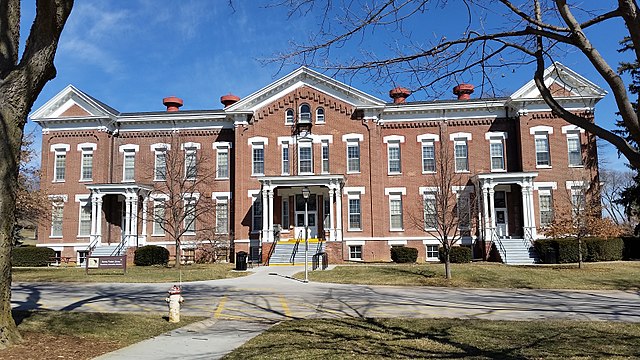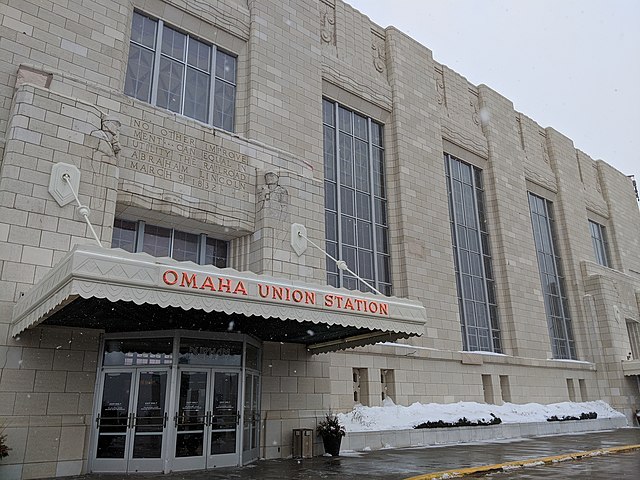Trans-Mississippi Exposition
The Trans-Mississippi and International Exposition was a world's fair held in Omaha, Nebraska, from June 1 to November 1 of 1898. Its goal was to showcase the development of the entire West from the Mississippi River to the Pacific Coast. The Indian Congress was held concurrently. Over 2.6 million people came to Omaha to view the 4,062 exhibits during the five months of the Exposition. President William McKinley and William Jennings Bryan were among the dignitaries who attended at the invitation of Gurdon Wattles, the event's leader. A hundred thousand people assembled on the plaza to hear them speak. The Expo stretched over a 180-acre (0.73 km2) tract in North Omaha and featured a 2,000-foot-long (610 m) lagoon encircled by 21 classical buildings that featured fine and modern products from around the world.
East portion of Lagoon. Gondolas and Swan Boat with passengers. Machinery & Electricity Building, Twin Tower Restaurants, and Colonnade visible to the northeast
A young Sioux boy poses with a club while part of a "living display" at the Exposition
Night illumination, Grand Court, Trans-Mississippi and International Exposition, Omaha, Nebraska, 1898
Bi-color essay for the $2 stamp (note: the Harvesting in the West vignette was ultimately reassigned to the 2¢ stamp and retitled "Farming in the West").
Omaha is the most populous city in the U.S. state of Nebraska and the county seat of Douglas County. Omaha is in the Midwestern United States on the Missouri River, about 10 mi (15 km) north of the mouth of the Platte River. The nation's 40th-most populous city, Omaha's 2020 census population was 486,051.
Image: City of Omaha, Nebraska Skyline on the Missouri River (30899969517)
Image: Fort Omaha
Image: USS Hazard at Freedom Park in Omaha, Nebraska. (2)
Image: Omaha Union Station (48440374712)








